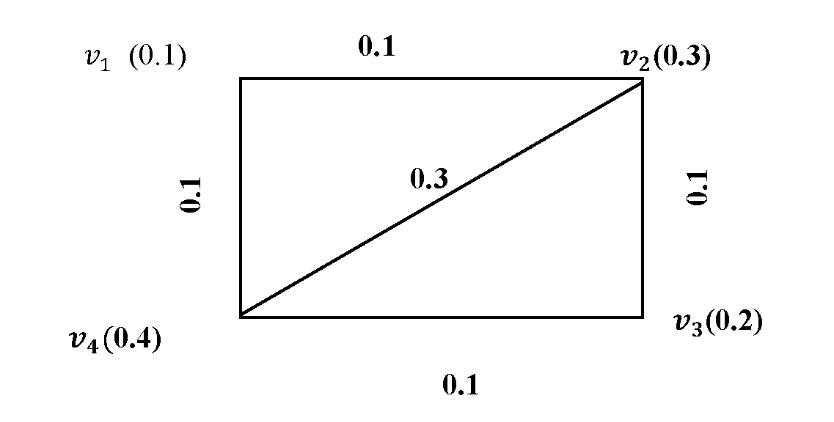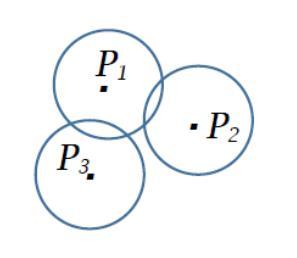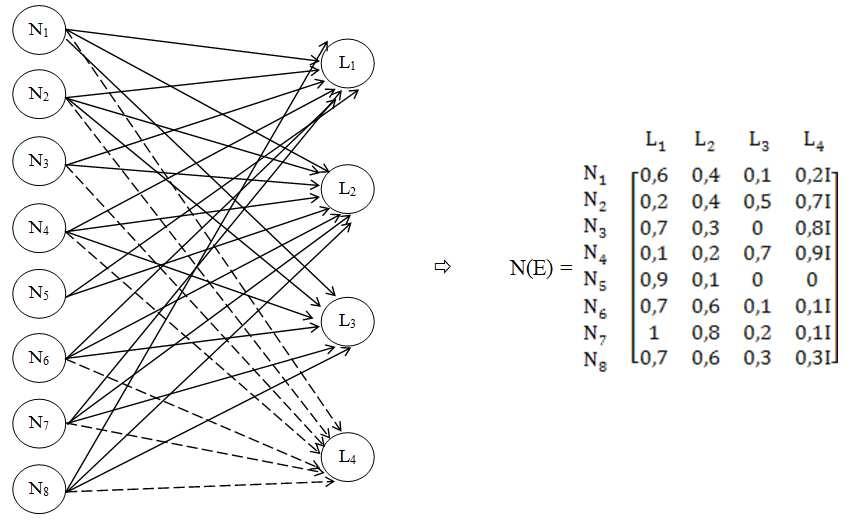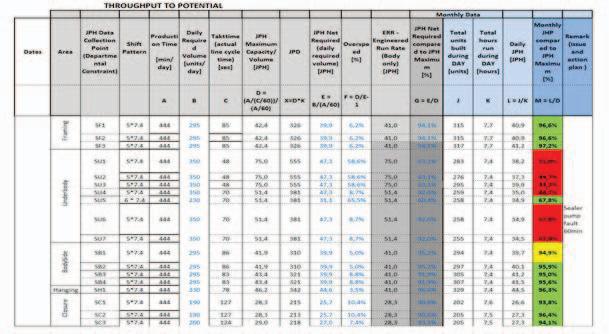
15 minute read
Maintenance Operating System Uncertainties Approached through Neutrosophic Theory
through Neutrosophic Theory
Advertisement
Mirela Teodorescu, Daniela Gîfu, Florentin Smarandache (2016). Maintenance Operating System Uncertainties Approached through Neutrosophic Theory. IEEE International Conference on Fuzzy Systems (FUZZ-IEEE): 2452-2459; DOI: 10.1109/FUZZ-IEEE.2016.7738001
Abstract - This study introduces the concept of uncertainty analysis of Neutrosophic Theory in the sphere of Maintenance Operating System (MOS). The aim of this study is to underline the importance of uncertainties solving in Maintenance Operating System. In maintenance process appear ambiguous states that can’t be assimilated neither true, nor false, meaning that the threshold state is a neutral one, being defined as fault in most of cases. In this regard, this uncertaintymaking decision process can be associated as functioning according to rules of Neutrosophy, and can be evaluated using elements of Neutrosophic Structures, Pareto Charts, maintenance metrics. Identification of uncertainties and study of their impact on maintenance, making the right decision, is the main focus of this paper.
The study is useful for business area, especially manufacturing lines endowed with complex equipment and facilities, also for researchers interested to make improvements for maintenance procedures.
I.INTRODUCTION
All advanced systems depend on having a foundation of Maintenance Operating Systems (MOS) in place, even if the owners will not admit that.
A method to improve efficiency and to decrease the downtime in manufacturing process is a goal for everybody.
An efficient maintenance offers a stable manufacturing process assuring reliability of the system.
Vision for MOS is a standardized, proactive and disciplined operating system that engages all team members to maintain the integrity and availability of equipment, facilities and processes.
Desired outcomes mean to engage stakeholders in the development and implementation of a standard MOS that ensures world class manufacturing Throughput to Potential (TTP) of plant facilities and equipment. Uncertainty represents an unsolved situation; it defines a fuzziness state [5]. The aim of this study is to identify uncertainties of MOS that definitely decrease efficiency of the system, to evaluate them through Neutrosophic Theory (NT) and to show the potentiality of the method for uncertainties solving.
The paper is structured as follows: Section 2 briefly describes the preview works related to Neutrosophic Theory, Section 3 discusses about MOS and uncertainties, Section 4 presents some results and statistics interpretation and finally, Section 5 depicts conclusions and directions for future work.
II.PREVIEW WORKS
In this section will be presented some pragmatic areas where neutrosophy is suitable and the basic concept of neutrosophic theory.
Neutrosophy is an available method for uncertainties investigation for any complex manufacturing line that involves advanced technology, many parameters and metrics. It can be applied to evaluate the uncertainty level, to analyze it [8].
Logistics is the field of study focused on the design, control, and implementation of the efficient flow and storage of goods and services. Because of numerous other related information from the point of origin to the point of final consumption with the aim to satisfy the requirements of its existing and prospective customers, the system can generate a lot of uncertainty [1].
A sample of using neutrosophic decision making model on manufacturing line as used for selection quality clay-brick for construction is developed and denoted to be suitable.
Keywords-uncertainty; neutrosophic theory; constraints; throughput to potential; uncertainty making decision;
Neutrosophy set is a tool that can deal with indeterminacy and inconsistent data [13].
According to the neutrosophy theory, the neutral (uncertainty) instances can be analyzed and accordingly, reduced. There are some spectacular results of applying neutrosophy in practical application such as artificial intelligence [3].
Extending these results, neutrosophy theory can be applied for solving uncertainty also on other domains such as Robotics, where are confirmed results of neutrosophics logics applied to make decisions when appear situations of uncertainty [10],[11].
The real-time adaptive networked control of rescue robots is another project that used neutrosophic logic to control the robot movement in a surface with uncertainties for it [12].
Neutrosophy analyzes, evaluates and interprets uncertainties. The specialty literature denotes that Zadeh introduced the degree of membership/truth (t), so the rest would be (1-t) equal to f, their sum being 1, and he defined the fuzzy set in 1965 [6]. Further, Atanassov improved Zadeh’s theory by introducing the degree of nonmembership/falsehood (f) and defining the intuitionist fuzzy set [7].
As novelty to previous theory, Smarandache introduced and defined explicitly the degree of indeterminacy/neutrality (i) as independent component. In any field of knowledge, each structure is composed of two parts: a space, and a set of axioms (or laws) acting (governing) on it. If the space, or at least one of its axioms (laws), has some indeterminacy of the form (t, i, f) ≠ (1, 0, 0), that structure is a (t, i, f) -Neutrosophic Structure [4].
III. MAINTENANCE OPERATING SYSTEM
Maintenance definition according to Business Dictionary, represents activities required or undertaken to conserve as nearly, and as long as possible the original condition of an asset or resource while compensating for normal wear and tear [2].
Without any operating system, a management system, some metrics to measure the progress, you are trying to build a foundation on the sand.
In maintenance process also intervene some uncertainties regarding failures involving equipment efficiency, process flow (bottlenecks on production line, constraints), operators skills, spare parts management, manufacturing line potential, etc. All of them decrease somehow the manufacturing process, directly or indirectly the efficiency of production flow. It is a challenge with the seconds of cycle time of product manufacturing, with maintenance concept of preventive, predictive or corrective, with people training, equipment spare parts or maintenance costs reducing [9].
Nowadays, when manufacturing processes are very complex, involving a lot of different types of machines and equipment, in which the product in fact, is an intricate one, maintenance is deployed as a system subordinated to manufacturing process. The main principles of maintenance are: safety and quality always in top; using data to make decisions; using standardized tools, practices, procedures; applying prevention through a continuously improvement process; optimization of the resources; maintaining the integrity of the equipment; maximize throughput of installed equipment and facilities to its potential, such as shown in Fig. 1.
There are 3 major inputs that generate faults or uncertainties: - People: poor training, lack of versatility, missing technically competent, poor communication;
Input(s)
1. People
Trained, versatile, personnel Technically competent communication
2. Machine
Affordable maintainability Robust and realistic preventive maintenance Implement and use production monitoring systems
3. Materials
Affordable predictive tools (vibration, ultrasonic, thermo camera) Spare parts management Maintenance budget
ANDON Notifications
Versatility matrix of personnel
Manpower available vs. Manpower required
Backup processes
Validation of systems data for accuracy and completeness
Key Process
1. Constraint Management and Prioritize
2. Planning and Scheduling
3. Execute Planned Maintenance
4. Optimize Maintenance
5. Unplanned Maintenance ANDON Notifications
1. Preventive Maintenance
2. Constraint performance
3. Plannedvs.Crisis PM
4.Labor hours for PM, PD
PM- Preventive Maintenance PD- Predictive Maintenance
Metrics
JPH to Potential
Throughput to Target
Output(s) Goals
Optimize resources to achieve 100% Utilization of equipment with ZERO unplanned Downtime
Fig. 1. The structure and elements of MOS
- Machine: not affordable maintainability, not realistic preventive maintenance, not existing production monitoring system, not applicable predictive maintenance (thermo camera, ultrasonic, vibration); - Materials: spare parts control with errors, nonstandardization of spare parts, not affordable predictive tools, small maintenance budget .
There are Key Process to control the threats of input: constraint management, planning and scheduling the maintenance, optimize maintenance, do unplanned maintenance.
The efficiency of maintenance is revealed by metrics such as JPH (Job Per Hour) and TTP (Throughput to Potential).
The goal of each system is ZERO defects, meaning no downtime on manufacturing process, an idealistic situation.
According to our goal, we proposed to analyze the faults that generate downtime of the system. The faults are revealed on TTP, a metric that shows the potentiality of manufacturing line to produce parts to high capacity related to engineering capacity. There are 3 zones of TTP that can be interpreted according to an established level (designed) L = 100% :
TTP < L – 2.5% - red zone; (1)
L – 2.5% <= TTP < L – 0.5% - yellow zone; (2)
TTP >= L – 0.5% - green zone; (3)
Daily collected data shows the status of manufacturing lines, emphasizing the constraints and bottle-necks, such as in Fig. 2.
TTP is a maintenance metric that emphasizes the line balancing from cycle time point of view. This means that within manufacturing line the stations have different cycle time to perform a product, according to the assigned operations. The stations with cycle time at the highest limit are called “constraints” and they can supply “bottle-necks” on manufacturing process.
According to these data it can be analyzed monthly productivity trend related to occurred faults, as in Fig. 3. The graphic underlines the evolution of TTP for constraints stations monthly, weekly for the previous month and daily for the current month.
Evaluating and analyzing the faults, they can be grouped such as: people training (operator lack skill), low communication level, missing spare parts, equipment obsolete level part, equipment parameters out of range, operating error, logistic error (wrong part supply)… Each fault type is generator of uncertainty, and involves uncertainty making decision process.
To evaluate correctly the fault rate we will make it in step 1, Pareto analysis for the most frequent faults group, as in Fig. 4.
Looking into Pareto Charts we see that “operator lack skill” induces a percentage of 25% relative frequency. Interpreting this data, we can say that reducing the rate of this item, it can be also reduced the fault rate of whole system. Operator lack skill involves confusion and uncertainty in faults solving making decision.
Fig. 2. Throughput to Potential Analysis
Fig. 3. Evolution in time of TTP
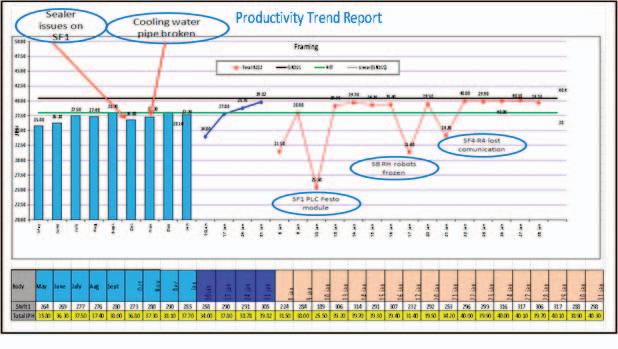
Increasing versatility of maintenance operators, it will cover the solving of wide area of faults making decision, such as quick intervention to equipment, right selection of part replacement, right selection of damaged equipment, avoiding inter-areas blockages, and so on. This is an important moment to make the right decision regarding to choose the appropriate truth degree membership (acceptance), indeterminacy degree membership and falsity degree membership (reject).
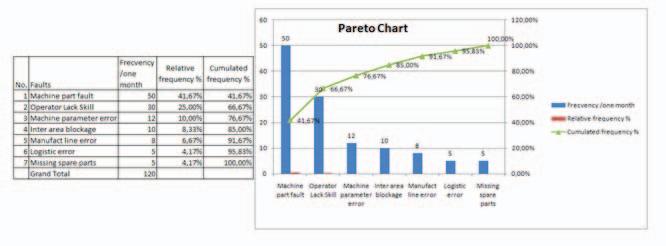
Fig. 4. Pareto Chart Analysis - step 1
To apply the neutrosophic method we have to define the space and the set of axioms for occurred uncertainties. Each operator has skills in different level of specialty knowledge in order to solve a maintenance fault.
To evaluate the level of uncertainty it is important to establish each level of uncertainty related to make the right decision, as is shown in TABLE 1, (as proposal).
The space is represented by operators and the set of axioms, by the skill level of fault solving for each operator. In Fig. 5 is shown the set of axioms for each operator, so we have a (T, I, F), as follows:
a11 - operator 1/skill 1 a12 - operator 1/skill 2 …
a15 - operator 1/ skill 5 and so on to … a55 - operator 5/ skill 5.
In this context, we can establish the whole space of states True, Indeterminacy, False (T, I, F), and the value of the space. In Fig.6, are presented the spaces and sets of axioms for 5 operators such as aij (T, I, F).
A complete cycle time to produce a part consists of a sum of specific times, such as: cycle time (effectively), starvation, blockage, wait for auxiliary parts, wait for attention, repair in progress, break, set-up, tool change, no communication. Uncertainties are focused on “wait for attention” when operator is confronted with confusion and ambiguous states, the moment of fault making a decision. The situation is eased byan IT application that monitors and handles the states of equipment in detail, and guides the operator to make more accurate the fault location.
TABLE 1 LEVEL OF UNDERTERMINACY
No. #L Level of uncertainty State T I F
1 L1 Solve the fault JIT (Just In Time)
1 0 0 2 L2 Solve the fault + Δt <1 <0,5 <0,2 3 L3 Solve the fault with help from other operator <0,5 <0,5<1 <1 4 L4 Nonsolving the fault by operator 0 0 1 5 L5 Nonsolving the fault, nobody in place 0 1 1 Fig. 5. Relation operator/skill - step 1
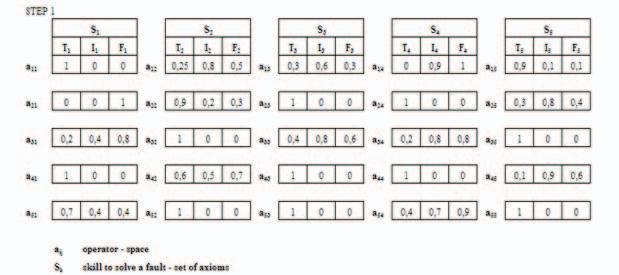
IV.RESULTS AND STATISTICS
In these conditions we got a realistic distribution of uncertainties regarding solving faults on the manufacturing line. For the step 2, it was applied training for operators in 5 major types of faults (equipment), as a consequence, the level of solving faults increased and uncertainties degree, decreased. So, we obtained the distribution of states as in Fig. 6.
Evaluating the faults occurred during a month, after applying training courses for operators, by ParetoCharts, we got the data shown in Fig. 7.
The number of solved faults decreased from 120 to 54, related to all types of faults.
The goal of MOS aspirs to an intelligent maintenance system, to achieve and sustain zero breakdown. This is the futere of maintenance, equipment, machines and systems to achieve highest performance including also self maintenance capabilities. The operator is a risk factor in this system that has to be taken into consideration. Such a goal can be achieved transforming raw data to valuable information regarding current and future condition and request of the asset.
Fig. 7. Relation operator/skill – step 2, after training
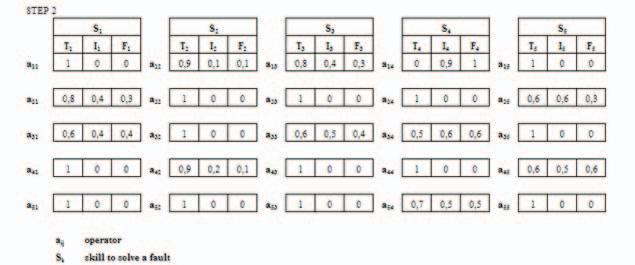
Fig. 6. Relation operator/skill – step 2, after training

Fig 7. Pareto Chart Analysis - step 2
V.CONCLUSIONS AND FUTURE WORK
The presentedwork in this study is a step towards developing a procedure available to uncertainties emerging in maintenance process of the complex manufacturing lines. Identification, evaluation, proceeding of the specified uncertainties of suggested metrics are incentive and supporting. It is helpful for MOS analysis, to be sustained by IT application monitoring equipment function, classifying faults, downtime calculus, revealing the reliability of the system. It is a real potentiality to make a decision for uncertainties degree towards.
Solving the uncertainties through mentioned method, classifying them into faults (false) or solving state (true),increases the efficiency of the process.
Analyzing the results, we observed that applying NT it can be emphasized the states of neutrality, ambiguously, uncertainty whereby we can act to transform them into stable status, true or false. Finding this applicability in Business, we can get through the next step, to design an algorithm the more inclusive, that reduce the time to make decision regarding the involved status and to decrease the downtime of equipment.
As future research we will extend our work using the complex neutrosophic set to more effectively capture the uncertainties in MOS.
The science of prognostics is based on the analysis of failure modes, detection of early signs of wear and aging, also fault conditions. Uncertainties, as we have seen in above example, are a source of failure. In this regard, we consider that it is a good opportunity to apply the Neutrosophic Theory to evaluate, analyse and make the right decision solving faults in maintenance process.
REFERENCES
[1] D. Gifu, M. Teodorescu, Pragmatical Solving of Uncertainties on Production Flow, The Global Electrical Engineers, 2015, 2, 1-9, Available:
[2] Business Dictionary Available: http://www.businessdictionary.com/definition/maintenance.html
[3] A. Gal,L.Vlădăreanu, F.Smarandache, H. Yu, M. Deng, Neutrosophic Logic Approaches Applied to "RABOT" Real Time Control, 2012.
[4] F. Smarandache, (T, I, F)-Neutrosophic Structures,Neutrosophic Sets and Systems, Vol.8, 2015.
[5] F.Smarandache, A Unifying Field in Logics: Neutrosophic Logic. Neutrosophy, Neutrosophic Set, Neutrosophic Probability. Infinite Study,1995.
[6] L.A. Zadeh, Fuzzy Sets*, Information and Control 8, 338-353, 1965
[7] K.T. Atanassov, Intuitionist fuzzy sets, Journal Fuzzy Sets and Systems, Volume 20 Issue 1, August 1986, Pages 87-9 [8] F. Smarandache, D. Gifu, M. Teodorescu, Neutrosophy, a Possible Method of
Process Analysis Uncertainties Solving, Uncertainty Communication
Solution in Neutrosophic Key, Europa Nova asbl, Bruxelles, 2015.
[9]L. R. Pyle, The Seven Modules of Systematic Maintenance, iUniverse, Inc.
New York Lincoln Shanghai, 2003.
[10] K. Okuyama, M. Anasri, F. Smarandache, V. Kroumov,Mobile Robot
Navigation Using Artificial Landmarks and GPS, Bulletin of the Research
Institute of Technology, Okayama University of Science, Japan, No. 31: 4651, 2013.
[11]F. Smarandache, L. Vlădăreanu, Applications of neutrosophic logic to robotics: An introduction, abstract, 2011 IEEE International Conference on
Granular Computing, GrC-2011, Kaohsiung, Taiwan, November: 8-10.
[12]F. Smarandache, L. Vlădăreanu, (2014),Applications of Neutrosophic Logic on Robots, Neutrosophic Theory and its Applications, Collected papers
Vol.1, Brussels, 2014.
[13] K. Mondal,S. Pramanik, Neutrosophic Decision Making Model for
ClayBrick Selection in Construction Field Based on Grey Relational
Analysis, 2015.
[14]M. E. McKone, R. G. Schroeder, K.O.Cua, Total productive maintenance: a contextual view. J Oper Manage 17(2):123, 1999.
[15]M.S. Prabhuswamy, P. Nagesh, K.P. Ravikumar, Statistical analysis and reliability estimation of total productive maintenance. IUP J Oper Manage 12(1):7–20 , 2013.
[16]A. Muller, A. C. Marquez, B. Iung, On the concept of e-maintenance: review and current research. Reliab Eng Syst Saf 93:11165–11187, 2008.
[17]J. Lee, J. Ni, D. Djurdjanovic, H. Qiu, H. Liao, Intelligent prognostics, 2006.
[18]S. Broumi and F. Smarandache, Single valued neutrosophic trapezoid linguistic aggregation operators based multi-attribute decision making,
Bulletin of Pure Applied Sciences- Mathematics and Statistics, Volume33e,
Issue 2,(2014)135-155.
[19]M. Ali, and F. Smarandache, Complex Neutrosophic Set, Neural Computing and Applications, Vol. 25, (2016), 1-18.DOI: 10.1007/s00521-015-2154-y.
[20]I. Deli, M. Ali, and F. Smarandache, Bipolar Neutrosophic Sets And Their
Application Based On Multi-Criteria Decision Making Problems. (Proceeding of the 2015 International Conference on Advanced Mechatronic
Systems, Beijing, China, August 22-24, 2015. IEEE Xplore,
D10.1109/ICAMechS.2015.7287068.
[21]M. Ali, I. Deli, F. Smarandache, The Theory of Neutrosophic Cubic Sets and
Their Applications in Pattern Recognition, Journal of Intelligent and Fuzzy
Systems, (In press), 1-7, DOI:10.3233/IFS-151906.
[22]V. Vlădăreanu, R. I. Munteanu, M. Ali, and L. Vlădăreanu, The optimization of intelligent control interfaces using Versatile Intelligent Portable Robot
Platform. International Conference on Communication, Management and
Information Technology (ICCMIT 2015), Procedia Computer Science,
Volume 65, 2015, Pages 225-232, DOI:10.1016/j.procs.2015.09.115


